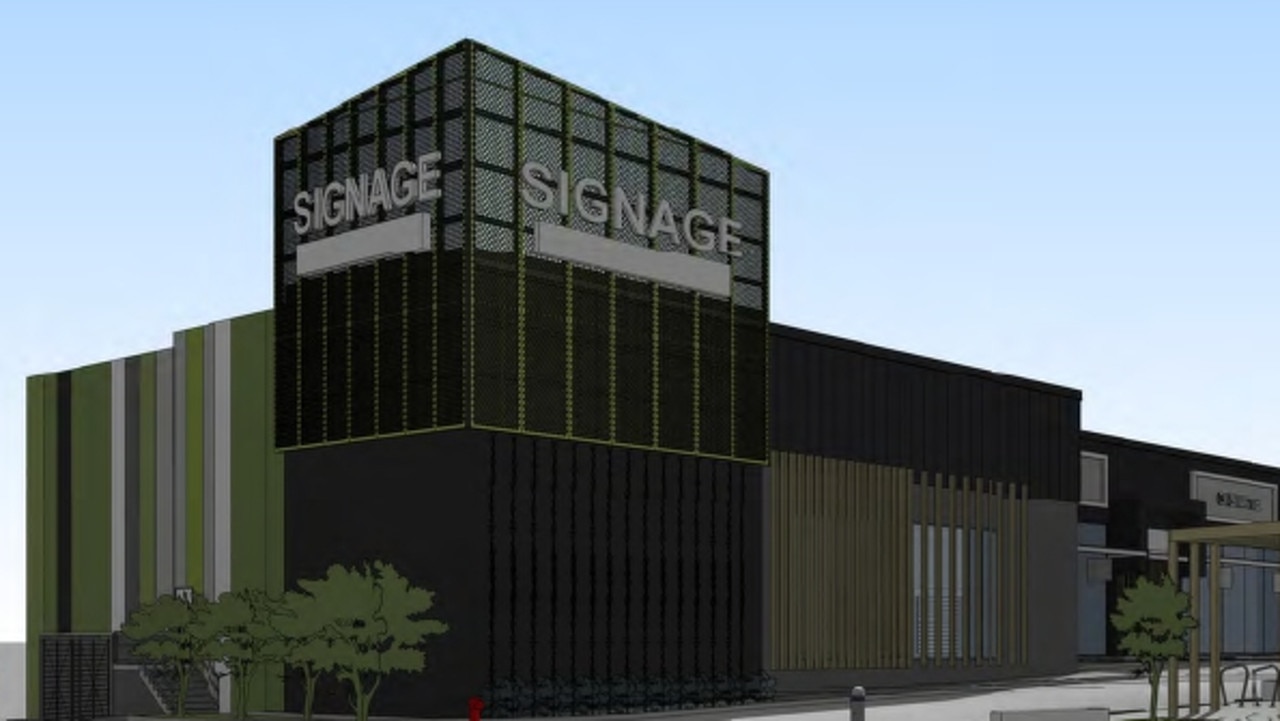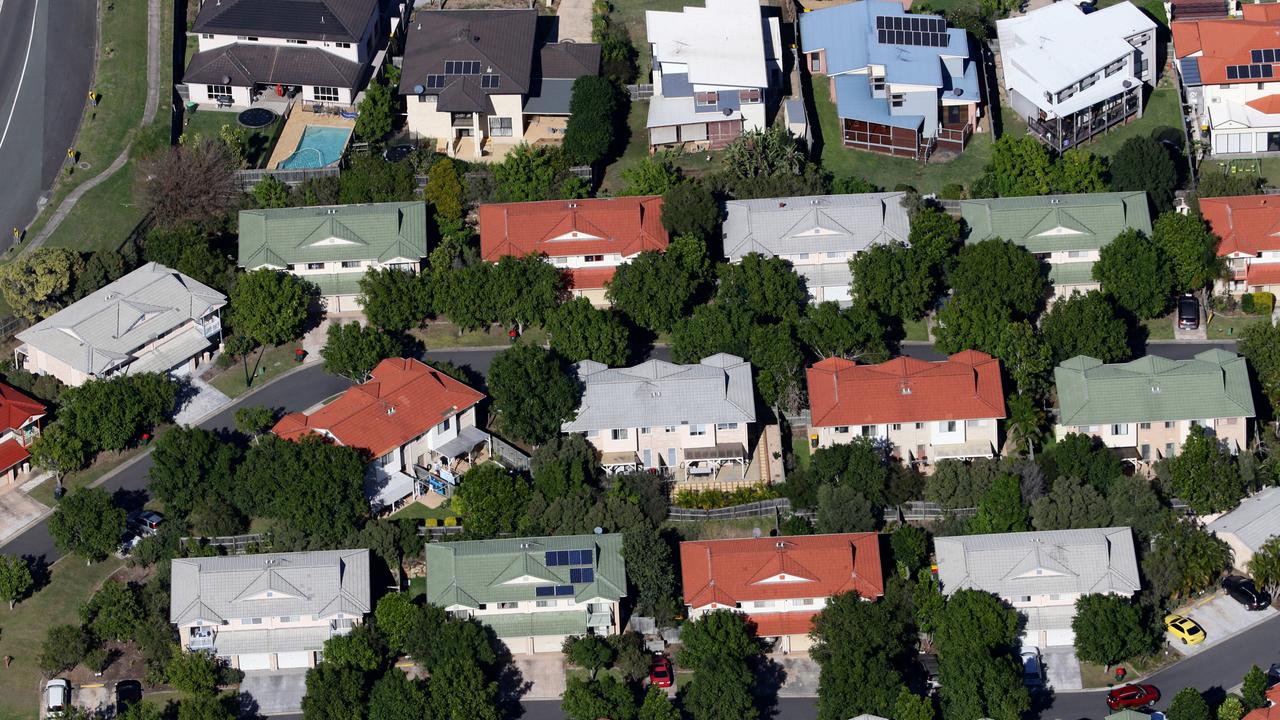Skipping meals, healthcare: Human cost of Qld rental crisis revealed
Queensland renters are skipping meals or going without vital care, with just 0.5% of vacancies affordable to those on income support - and it is not much better for those on the minimum wage.
Property
Don't miss out on the headlines from Property. Followed categories will be added to My News.
Queensland renters are skipping meals, selling belongings or going without health and dental care to make ends meet, with a new report revealing that just 0.5 per cent of vacancies are affordable to those on income support.
And it was not much better for those on the minimum wage, with just 759 (8.9 per cent) of the 8553 rental properties surveyed for the Anglicare Southern Queensland Rental Affordability Snapshot considered both affordable and suitable.
The research found just 45 of the total 8533 properties (0.5 per cent) listed were affordable
and appropriate for households on income support.
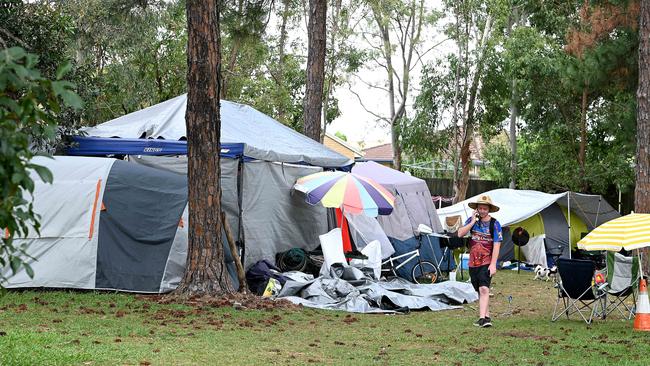
“Our snapshot shows in some areas households are spending up to and over 80 per cent of their total household income on rent, meaning they are forced to make untenable choices between paying rent or putting food on the table or going to the doctor or to school – all fundamental needs,” Anglicare Southern Queensland’s CEO Sue Cooke said.
“While there was a slight increase in the number of available rentals in the Brisbane metro area compared to last year, the number of those properties that were affordable and appropriate for households on income support and minimum wage basically halved compared to 2023.
“The situation is even worse in coastal areas, with the Gold Coast, Sunshine Coast, Moreton Bay, and Wide Bay offering few to no affordable properties.”
Anglicare looked at the available rentals listed over the weekend of March 16 and 17, and it painted a grim picture.
Pointing to the Gold Coast, Ms Cooke said there were zero houses available for households on income support, and only four available to households on the minimum wage on the weekend during that period, with a similar scenario played out on the Sunshine Coast.
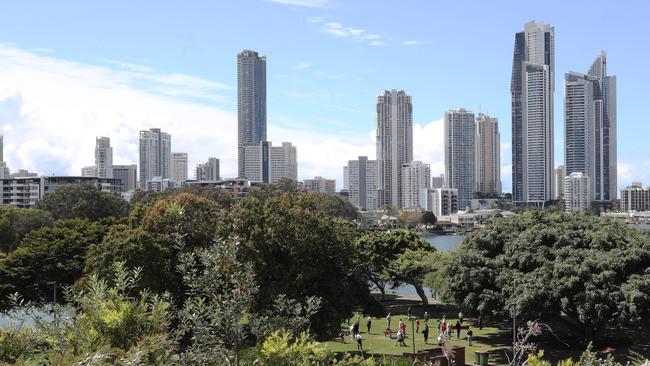
There was also zero suitable properties for renters on income support in the Moreton Bay region, with 107 (14.9 per cent) suitable for minimum wage earners.
“Away from the coast, there is almost no availability, or the limited affordable properties in a region may be hundreds of kilometres away in a different town,” she said.
“Unfortunately, these figures highlight the stark reality of the cost-of-living crisis on the most
vulnerable in our communities.
“They show there is a pressing need for comprehensive policy reforms at all levels to address the widening gap in rental affordability.”
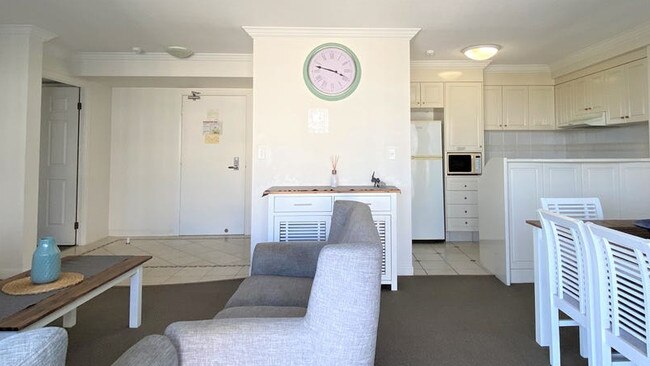
Outback South had the highest percentage of properties considered to be both affordable and suitable to low-income earners at 75 per cent, but there were just a dismal four vacancies listed with report saying that figure was “effectively meaningless”.
The Darling Downs-Maranoa had the second highest percentage with 422 rentals listed, but just 23 (5.5 per cent) were suitable for those on income support.
But using the example of a couple on the age pension, the report noted there was only 13 suitable properties available across the 166,347sq m region.
“Over the past three years, regional Queensland has become the most unaffordable place to rent a home in Australia, driven by a range of complex and often localised factors,” the report said.
“The continuing influx of sea and tree-changers, particularly from interstate, and the need to house workers on large infrastructure projects is having an impact across many regions.”
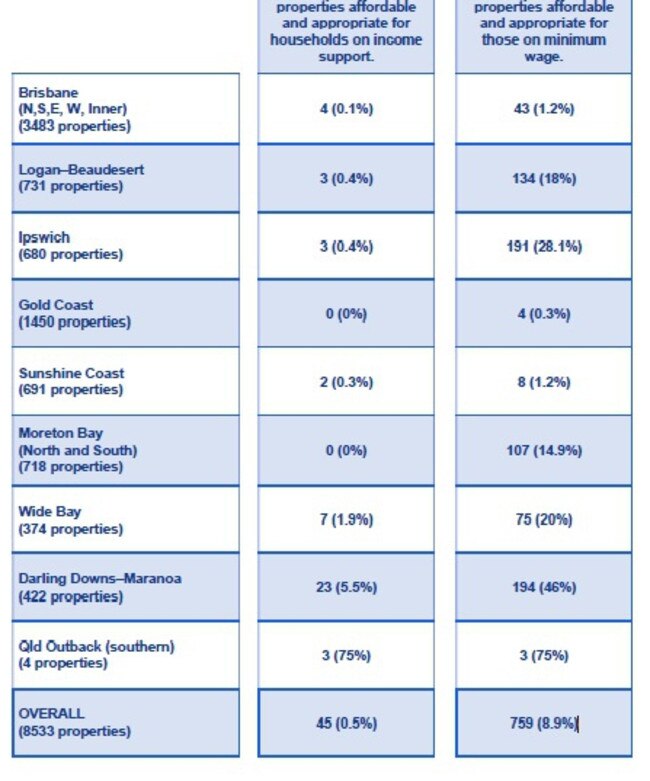
Of the 3483 properties listed in Brisbane just four (0.1 per cent) were suitable for tenants on income support and 43 (1.2 per cent) were appropriate for those on minium wage.
“Compared with a household paying 30 per cent of its income on rent, a household paying 40 per cent was two and a half times more likely to go without a meal; twice as likely to have sold or pawned belongings to cover essential payments; and almost twice as likely to have
children with inadequate health or dental care,” the report revealed.
“In coastal areas, it is hard to imagine how the situation could be much worse.”
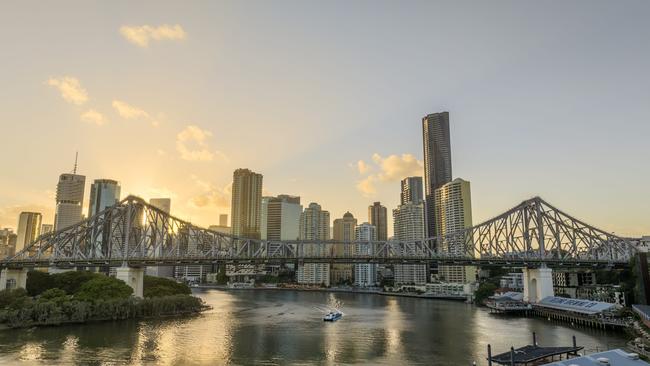
But it not just those on income support or minimum wage that are feeling the pinch, with numerous stories coming out from dual income families and blue collar professionals detailing how the cost of living crisis has forced them onto the brink of homelessness.
News Corp has spoke to nurses, prison workers, truck drivers, teachers and other professions who have found themselves unable to secure a roof over their heads due to skyrocketing costs and unrelenting demand.
Many have reported hearing nothing back from dozens of applications despite unblemished tenancy histories.
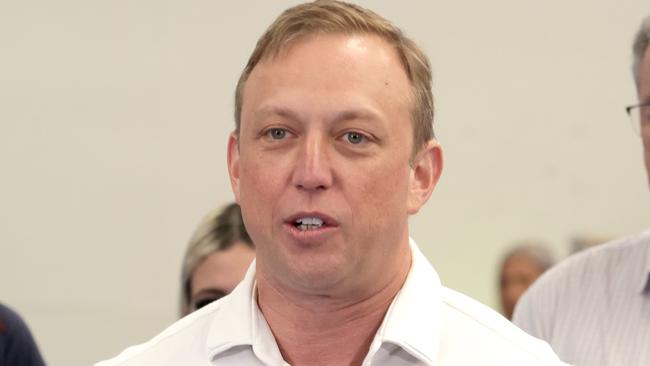
A recent report by PropTrack revealed that rental affordability had hit its worst level in at least 17 years as a result of skyrocketing rents since the pandemic and stagnant wage growth.“Households in New South Wales, Tasmania and Queensland face the toughest rental affordability in the country,” the PropTrack report found.
“Queensland continues to rank as the third-least affordable state to rent in across Australia, a position it has held since 2017.”
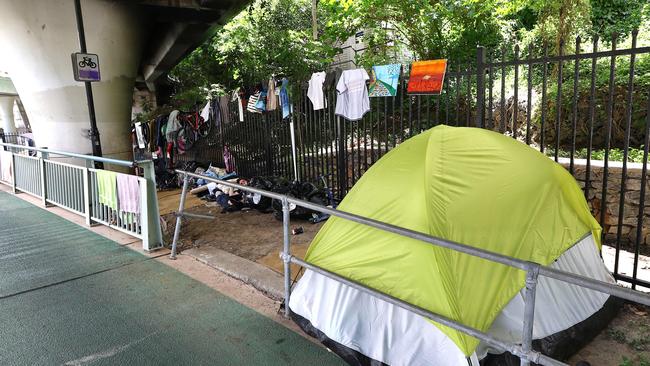
Highlighting the alarming state of rental affordability, PropTrack found that a household earning the median (or typical) income in Australia of $111,000 could only afford 39 per cent of rentals advertised over July-December 2023 - the lowest share since records began in 2008.
Brisbane and regional Queensland have also seen very strong growth: rents have increased by $200, equivalent to 50 per cent and 53 per cent growth, respectively,” PropTrack reported.
And it has pushed more people into makeshit tent cities across the state, with others forced to live in their cars or caravan parks.
There are now at least 20 makeshift campsites and tent cities across southeast Queensland, including in Premier Steven Mile’s own electorate of Murrumba.
St Vincent De Paul has described the state’s homelessness crisis as the”worst it has ever been”.
Ms Cooke said while the housing crisis was being addressed at state and federal levels,
more needed to be done to manage the chronic undersupply of housing and to provide the means for people to obtain safe and secure homes.
“We join the chorus of others calling for the Australian Government to step up and increase
Jobseeker Youth Allowance and related payments and for both federal and state governments to invest further in social and affordable housing projects,” she said.
“With the Federal Budget announcement on the horizon, the time for decisive action is now. It is imperative that our national and state policies reflect the basic human right to housing, ensuring that no one is left behind.”
Brisbane’s vacancy rates was 0.98 per cent in March, a 0.03 per cent increase on the previous month. But it was down a staggering 55 per cent since March 2020, at the start of the pandemic, according to PropTrack.
Vacancy rates in regional Queensland are down 56 per cent since the start of the pandemic.




